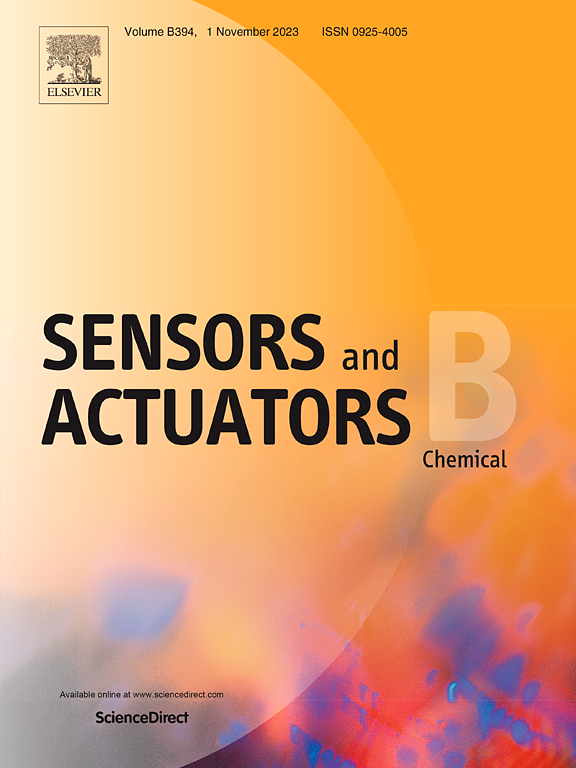Laser Diode-Induced in Situ Solid-State Synthesis of Graphitized Magnetic Nanostructures as Novel Nanozyme Catalysts
IF 8
1区 化学
Q1 CHEMISTRY, ANALYTICAL
引用次数: 0
Abstract
Laser-induced graphene (LIG) is a revolutionizing nanomaterial as a tunable, 3D-networked, highly conductive, which makes it a perfect platform for hosting functional nanostructures and enhancing catalytic activity. In this work, a one-step Near-UV laser-assisted graphitization of magnetic nanomaterials —Fe₃O₄-LIG, Ag-Fe₃O₄-LIG, and Cu-Fe₃O₄-LIG— has been developed that forms a universal four-in-one nanozyme catalytic platform with peroxidase (POD), oxidase (OXD), catalase (CAT), and laccase (LAC) activities. The laser-driven process enables simultaneous graphitization, metal oxidation, and nanostructuration, offering an inexpensive, green, and scalable option for multi-step synthesis protocols. The nanozymes thus obtained were well characterized by scanning/transmission electron microscopy (SEM/TEM) for morphology, X-ray diffraction (XRD) for crystallinity, and Raman spectroscopy for graphitic character. An exhaustive dual characterization via optical as well as electrochemical methods was employed to assess and monitor the nanozyme material's catalytic activities. Out of all synthesised materials, Ag-Fe₃O₄-LIG exhibited the highest oxidase and peroxidase mimicking activity, whereas Cu-Fe₃O₄-LIG exhibited enhanced catalase and laccase-like activity. To investigate the laccase activity further, Cu-Fe₃O₄-LIG was employed with phenolic compounds like dopamine, adrenaline, and L-dopa, which oxidized the substrates into aminochromes. As a proof of concept, taking advantage of the electroactivity of adrenochrome, adrenaline was sensed using a 3D porous LIG sensor. The sensor exhibited great sensitivity in the cathodic region with a linear range of 0.5 to 10 μM and a detection limit of 0.23 μM. This work creates a groundbreaking nanozyme platform with broad implications in biosensing, demonstrating the strength of laser-assisted soft synthesis for future generations of enzyme-mimicking materials.

激光二极管诱导原位固体合成石墨化磁性纳米结构作为新型纳米酶催化剂
激光诱导石墨烯(LIG)是一种革命性的纳米材料,具有可调谐、3d网络、高导电性,这使其成为承载功能纳米结构和增强催化活性的完美平台。在这项工作中,已经开发了一种一步近紫外激光辅助石墨化磁性纳米材料- fe₃O₄- lig, Ag-Fe₃O₄- lig和Cu-Fe₃O₄- lig -,它形成了一个具有过氧化物酶(POD),氧化酶(OXD),过氧化氢酶(CAT)和漆酶(LAC)活性的通用四联纳米酶催化平台。激光驱动的工艺可以同时实现石墨化、金属氧化和纳米结构,为多步合成方案提供了一种廉价、绿色和可扩展的选择。通过扫描/透射电子显微镜(SEM/TEM)、x射线衍射(XRD)和拉曼光谱(Raman)对所得纳米酶的形貌进行了表征。通过光学和电化学方法进行详尽的双重表征,以评估和监测纳米酶材料的催化活性。在所有合成材料中,Ag-Fe₃O₄-LIG表现出最高的氧化酶和过氧化物酶模拟活性,而Cu-Fe₃O₄-LIG表现出增强的过氧化氢酶和漆酶样活性。为了进一步研究漆酶的活性,将Cu-Fe₃O₄-LIG与多巴胺、肾上腺素和左旋多巴等酚类化合物结合,将底物氧化成氨基色素。作为概念验证,利用肾上腺素色素的电活动,使用3D多孔LIG传感器来检测肾上腺素。该传感器在阴极区域具有很高的灵敏度,线性范围为0.5 ~ 10 μM,检测限为0.23 μM。这项工作创造了一个开创性的纳米酶平台,在生物传感领域具有广泛的意义,展示了激光辅助软合成的强度,为未来几代酶模拟材料。
本文章由计算机程序翻译,如有差异,请以英文原文为准。
求助全文
约1分钟内获得全文
求助全文
来源期刊

Sensors and Actuators B: Chemical
工程技术-电化学
CiteScore
14.60
自引率
11.90%
发文量
1776
审稿时长
3.2 months
期刊介绍:
Sensors & Actuators, B: Chemical is an international journal focused on the research and development of chemical transducers. It covers chemical sensors and biosensors, chemical actuators, and analytical microsystems. The journal is interdisciplinary, aiming to publish original works showcasing substantial advancements beyond the current state of the art in these fields, with practical applicability to solving meaningful analytical problems. Review articles are accepted by invitation from an Editor of the journal.
 求助内容:
求助内容: 应助结果提醒方式:
应助结果提醒方式:


